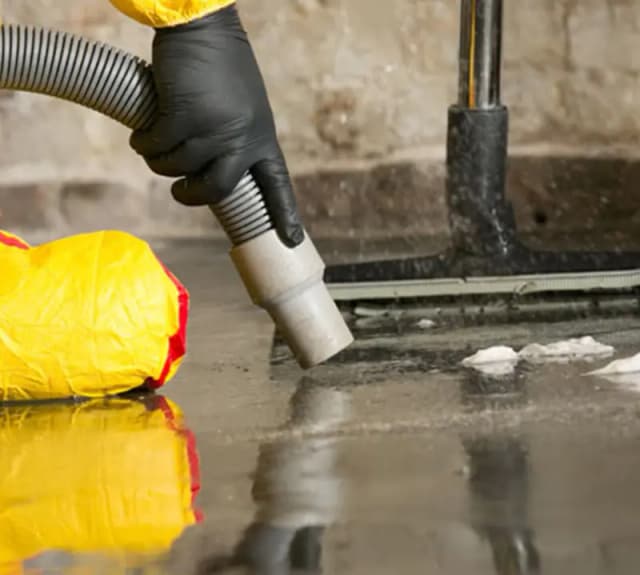Water damage can affect every part of a home — from the floors and walls to electrical systems and structural integrity. While it may seem irreversible at first glance, water damage restoration offers a comprehensive process that can reverse many of the harmful effects when performed correctly and promptly.
Restoration typically starts with water extraction, drying, and dehumidification. Professionals use industrial-grade vacuums, blowers, and dehumidifiers to ensure no moisture remains. After drying the area, they proceed with cleaning and sanitizing all affected surfaces. In severe cases, materials like drywall, insulation, and flooring may need to be replaced entirely.
If mold has started forming, mold remediation is incorporated into the restoration plan. This process ensures that spores are not left behind to cause future health hazards or property damage. Each step is critical to reversing the damage and restoring your home to its original, pre-incident condition.
How Quickly Should You Act After Water Damage Occurs?
Immediate action is vital. Water damage can start causing permanent destruction within hours. Wood begins to swell, drywall starts to disintegrate, and mold spores find the damp environment ideal for growth. The longer the water sits, the more damage it does—and the harder it becomes to fully restore the property.
Professional water damage restoration experts recommend contacting a licensed team within the first 24 to 48 hours after the incident. Fast intervention minimizes damage, increases the chances of full recovery, and reduces the risk of complications like mold growth and electrical hazards.
Can Restoration Return Your Property to Its Pre-Damage State?
In most cases, yes. With the help of experienced professionals and advanced equipment, full water damage restoration is achievable. However, this depends on several factors:
- Extent of Damage: Minor leaks and short-term water exposure are easier to reverse than floods that soaked your property for days.
- Type of Water: Clean water from burst pipes is less damaging than greywater or blackwater from sewage backups, which carry health risks.
- Speed of Response: Homes addressed within the first 24 hours stand a better chance of being fully restored.
Structural materials like hardwood floors, drywall, and insulation can often be repaired or replaced. Paint and finishes may need touch-ups, and carpeting may require professional cleaning or full replacement depending on the extent of saturation. So, while some items may not be salvageable, overall water damage restoration can return most of your property to its previous condition.
What Role Does Professional Equipment Play in Restoration?
Advanced equipment plays a major role in ensuring full restoration. Industrial dehumidifiers, air movers, and moisture meters detect and remove hidden dampness that could lead to further deterioration or mold growth. Without this equipment, homeowners risk leaving behind moisture in wall cavities, under floors, or inside insulation, resulting in long-term problems.
Professional restoration teams use infrared cameras to identify areas of hidden moisture. This allows them to target problem zones more effectively, ensuring that no moisture is left behind. These tools are essential for complete water damage restoration.
Are Personal Belongings Recoverable After Water Damage?
Personal belongings are often the most emotionally valuable items in a home. During water damage restoration, specialists assess whether items like photos, documents, electronics, and furniture can be salvaged.
Document drying techniques, freeze-drying methods, ultrasonic cleaning for electronics, and antimicrobial treatments for furniture are commonly used. While not every item can be saved, restoration experts will prioritize salvaging as much as possible using the latest technology.
How Does After Death Cleanup Relate to Water Damage Restoration?
After Death Cleanup often intersects with water damage restoration, especially in cases where a body is undiscovered for a prolonged period. Decomposition fluids can seep into floors and substructures, creating a water damage scenario with significant biohazard risk.
In such cases, cleanup professionals must address both water and biological contamination. These teams are trained to remove hazardous materials, sanitize affected areas, and deodorize the space. It’s a sensitive and highly specialized service that requires discretion and expertise.
Much like in water damage restoration, timing and professional handling are key. The goal is always to restore the space safely and completely, ensuring it’s habitable again without residual risks.
What Long-Term Risks Arise If Restoration Isn’t Done Properly?
If water damage restoration is poorly handled or incomplete, the home faces numerous long-term risks:
- Mold Growth: Mold thrives in damp, untreated environments and can lead to serious health problems.
- Structural Weakness: Water can compromise the strength of wood beams, drywall, and subfloors.
- Electrical Issues: Moisture can corrode wiring and lead to short circuits or fire hazards.
- Odor and Stains: Lingering moisture can leave behind musty smells and unsightly stains that worsen over time.
These risks highlight the importance of hiring certified restoration professionals who can guarantee a thorough job. Skipping steps or cutting corners may save money initially but result in costly repairs later.
Can Insurance Cover the Cost of Restoration?
In many cases, homeowners insurance covers water damage restoration, but the specifics vary depending on the cause of the damage. Most policies cover sudden, accidental water damage, such as burst pipes or appliance overflows.
However, insurance typically does not cover:
- Flood damage (unless you have separate flood insurance)
- Gradual leaks
- Negligence
If you experience a water damage event, notify your insurer immediately. Document the damage with photos and keep records of all restoration efforts. A professional assessment and restoration quote can also support your claim.
Why Should You Always Hire Certified Restoration Experts?
Not all restoration companies are equal. Hiring IICRC-certified professionals ensures that industry standards are met throughout the water damage restoration process. Certified teams are trained to handle every aspect of restoration, from initial assessment and water extraction to mold remediation and final repairs.
They also understand the intersection with specialized services like After Death Cleanup, bringing the right equipment and sensitivity to these challenging jobs. A certified team provides peace of mind that your property is not only cleaned but also safe for re-entry and daily living.
Conclusion: Is Complete Water Damage Reversal Truly Possible?
Yes, with swift action and professional help, water damage restoration can fully reverse many types of damage. Homes and properties affected by clean water or minor flooding have an especially high chance of being restored to pre-loss condition.
Even in more severe cases involving biohazards or After Death Cleanup, skilled restoration teams can clean, disinfect, and rebuild affected areas. The key lies in timing, expertise, and the use of advanced tools.
If your property suffers water damage, don’t delay. Act fast, hire professionals, and know that with the right approach, full recovery is not just possible — it’s likely.
- Can Water Damage Be Fully Reversed with Restoration?
- Water damage can affect every part of a home — from the floors and walls to electrical systems and structural integrity.
- water damage restoration
Related posts:
 The Rise of the Probiotic Drink: A Wellness Staple for Gut and Liver Health
The Rise of the Probiotic Drink: A Wellness Staple for Gut and Liver Health
 Empowering Senior Living: A Comprehensive Look at Elder Care Services in India
Empowering Senior Living: A Comprehensive Look at Elder Care Services in India
 What Happens If I Stop Getting Anti-Wrinkle Treatments? – Learn
What Happens If I Stop Getting Anti-Wrinkle Treatments? – Learn
 Nature’s Wrap: Exploring the Biodegradable Packaging Revolution
Nature’s Wrap: Exploring the Biodegradable Packaging Revolution
 Ashtanga Hridayam Book : The Essence of Ayurveda with CSS Banaras
Ashtanga Hridayam Book : The Essence of Ayurveda with CSS Banaras
 How the Neurology and Mental Health Conference 2025 Empowers Patients
How the Neurology and Mental Health Conference 2025 Empowers Patients
 Dentist in Largo Florida – Expert Care with a Personal Touch at Blue Dental Largo
Dentist in Largo Florida – Expert Care with a Personal Touch at Blue Dental Largo
 What Are Common Myths About Laser Vaginal Tightening Treatment?
What Are Common Myths About Laser Vaginal Tightening Treatment?








